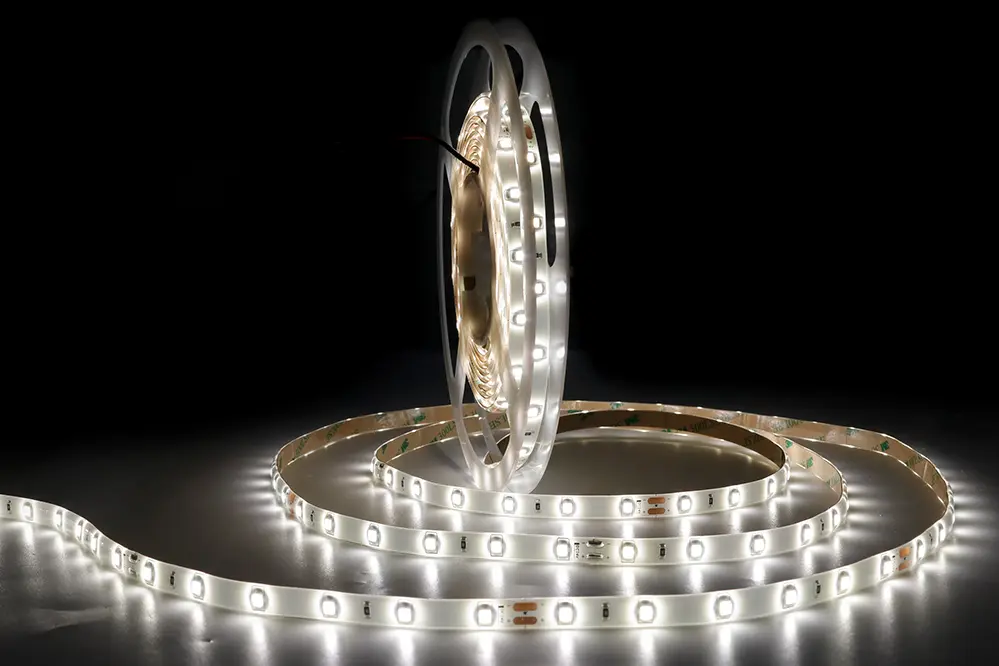Are you ready to illuminate your space with the perfect LED strip lights but feeling overwhelmed by the options available? Look no further! In this comprehensive guide, we will walk you through the essential factors to consider when purchasing LED strip lights. From voltage considerations and led density to installation tips, we’ve got you covered with expert advice to help you make the right choice for your lighting needs.
When it comes to choosing between LED strips, the decision can significantly impact the performance and aesthetics of your lighting setup. But fret not, as we delve into the nuances of each option, providing you with valuable insights to make an informed decision. Whether you’re a lighting enthusiast or a professional in the industry, these tips will steer you in the right direction towards selecting the ideal LED strip lights for your project.
Hello, I’m Tom, and I’ve been deeply immersed in the world of LED lighting since 2005. With a wealth of experience and expertise in LED technology, particularly LED strip lights, I’ve curated this blog post to share my knowledge and insights with you. Drawing from years of hands-on experience and a passion for innovative lighting solutions, I aim to empower you with the information needed to navigate the LED strip light market confidently.
Ready to shed light on the intricacies of choosing the perfect LED strip lights? Let’s dive right in! Explore our expert tips and recommendations to unlock the full potential of your lighting design and create the ambiance you’ve always envisioned. Whether you’re embarking on a new project or upgrading your existing setup, this guide is your go-to resource for making informed decisions and illuminating your space with brilliance.
Types of LED Strip Lights
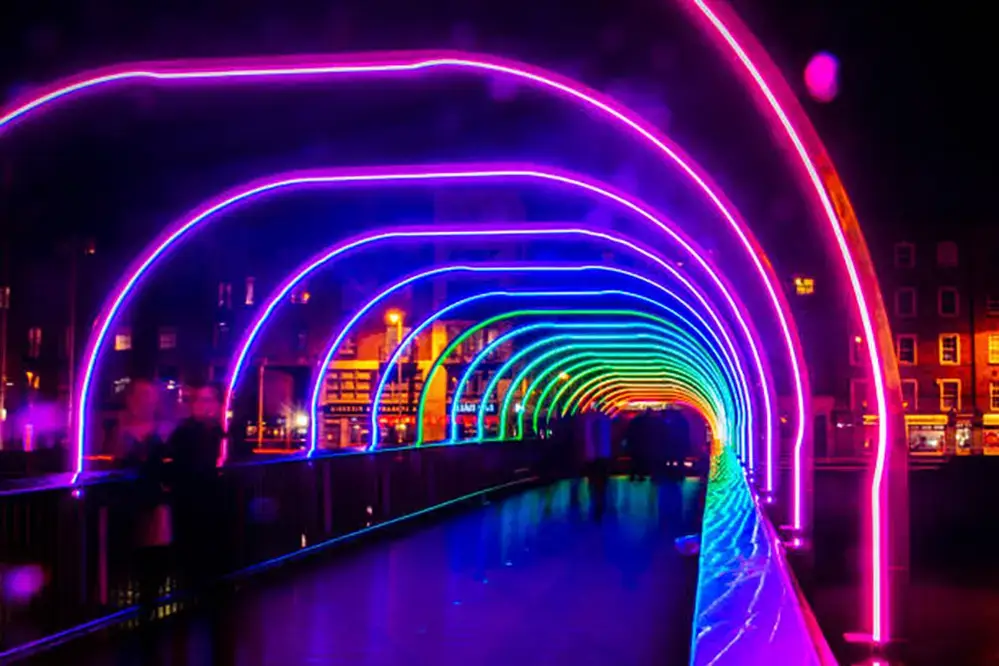
When selecting LED strip lights, it’s important to recognize the various types available, each designed for specific applications. Common variants include flexible, rigid, single-color, RGB, and addressable strips, each offering unique benefits.
Flexible strips are ideal for curved surfaces, while rigid strips provide sturdiness. RGB strips offer dynamic color options, and addressable strips allow for advanced lighting effects.
Single Color vs. RGB
Choosing between single color and RGB LED strip lights largely depends on the intended application and desired aesthetic outcome. Single color strips typically produce a consistent, uniform light.
In contrast, RGB LED strips can create a wide range of colors, making them more versatile for dynamic lighting setups. They are often controlled via remote or an app for customized hues and effects.
RGB LED strips can display millions of colors to match any décor, providing customizable mood lighting options for any setting.
When deciding, consider maintenance: single color strips usually have fewer components, leading to potentially increased lifespan and reduced complexity (beneficial for straightforward installations). On the other hand, RGB strips offer unparalleled versatility for those seeking a more dynamic lighting experience. Weigh these factors carefully.
Waterproof vs. Non-waterproof
When choosing between waterproof and non-waterproof LED strip lights, it’s crucial to consider the installation environment.
- Waterproof LED strips(IP65 above) are ideal for outdoor environments, bathrooms, and kitchens.
- Non-waterproof IP20 LED strips are best suited for indoor installations where exposure to water or moisture is minimal.
- Waterproof strips typically come encased in a silicone or epoxy layer.
- Non-waterproof strips are generally easier to install and manipulate, offering significant installation ease for most indoor applications.
- Waterproof strips may be bulkier due to the protective coating.
Each option has its specific applications that can significantly impact performance and longevity.
Carefully assess the environmental factors to ensure optimal function and durability.
Understanding these distinctions can help you make an informed decision tailored to your lighting needs.
Brightness and Color Temperature
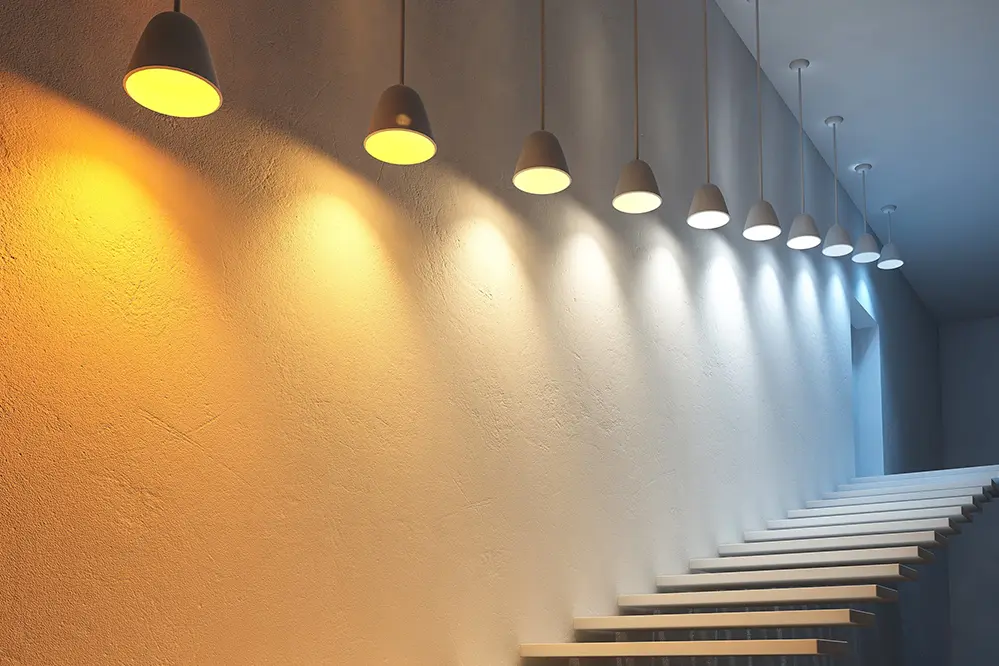
Brightness, typically measured in lumens, is a critical factor determining how vivid your LED strip lights will appear. Higher lumen values indicate a brighter light. Similarly, color temperature, expressed in Kelvin (K), defines the hue and ambiance of the light. Cooler color temperatures (above 5000K) produce a bluish-white light that mimics daylight, ideal for task-oriented spaces like kitchens or offices. Conversely, warmer color temperatures (2700K-3000K) emit a yellowish-orange glow, creating a cozy, inviting atmosphere suitable for living rooms or bedrooms. Balancing these two aspects is essential for achieving the desired lighting effect in any application.
Lumens and Wattage
Lumens measure the total light output, while wattage indicates energy consumption.
When choosing LED strip lights, it’s crucial to prioritize lumens over wattage for gauging brightness, as advancements in LED technology have led to highly efficient lights producing more lumens per watt. By focusing on lumens, you can accurately compare the brightness of different products regardless of their power consumption, ensuring that your lighting solution meets the desired intensity.
Traditionally, higher wattage lights were assumed to be brighter. However, this is not necessarily true with LED technology. An LED strip light with lower wattage can still deliver the desired brightness if it has a high lumen output.
Therefore, by understanding the relationship between lumens and wattage, you can achieve energy-efficient lighting designs. This approach maximizes brightness while minimizing power usage, aligning with contemporary sustainability goals and reducing operational costs over time. Prioritize lumens for accuracy and wattage for energy efficiency in your lighting configurations.
Warm vs. Cool Light
Choosing between warm and cool light affects ambiance.
Warm light, often around 2700K to 3000K, emits a soft, yellowish glow. This light mimics the natural warmth of incandescent bulbs, making it ideal for creating cozy, inviting spaces such as living rooms and bedrooms. In contrast, cool light, typically ranging from 3500K to 5000K, produces a stark white or bluish tone that enhances focus and alertness, making it suitable for workspaces and environments requiring high visibility.
Consider the color temperature.
For a specific purpose, the appropriate color temperature will enhance functionality. For instance, cool light can simulate daylight conditions in offices, boosting productivity, while warm light can create a relaxing atmosphere in restaurants and hospitality settings.
With advancements in LED technology, modern LED strip lights often come with adjustable color temperatures. This flexibility allows users to tailor their lighting environments precisely to their needs, providing both aesthetic and practical benefits. Consequently, when selecting LED strip lights, it’s essential to evaluate the temperature range offered and how it aligns with your intended application.
12V or 24V
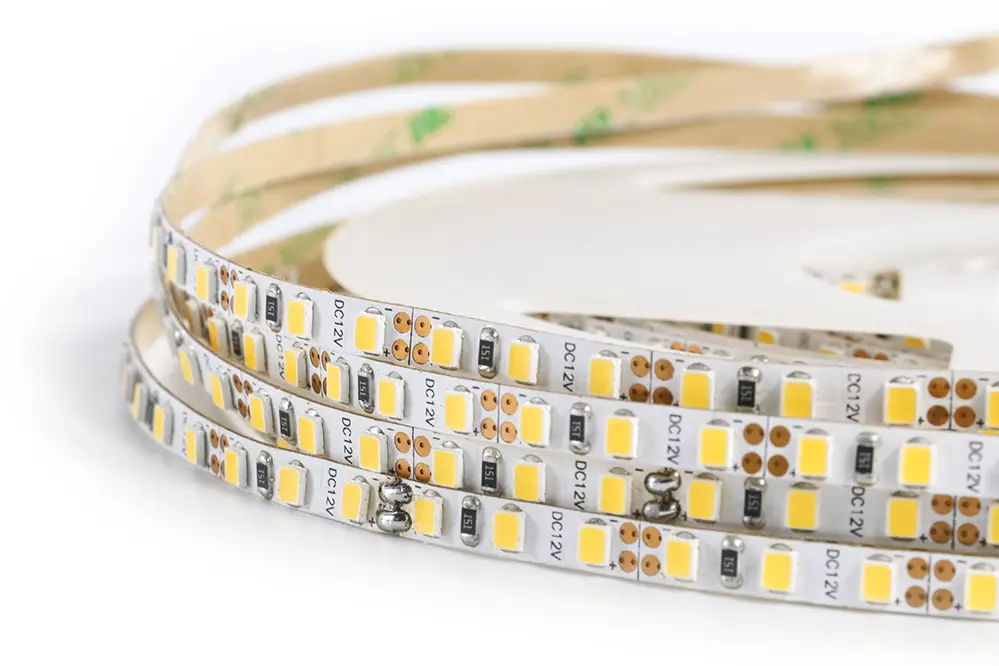
Voltage Requirement:
12V LED Strips: Ideal for smaller installations or projects requiring flexibility. They are commonly used in residential settings and DIY projects.
24V LED Strips: Suitable for larger installations and commercial applications. They are known for their efficiency and ability to cover longer distances without voltage drop.
Brightness and Color Consistency:
12V LED Strips: May experience voltage drop over longer lengths, affecting brightness and color consistency.
24V LED Strips: Maintain brightness and color consistency over longer distances due to their higher voltage.
Installation and Wiring:
12V LED Strips: Require more frequent power injection and may need thicker wires to compensate for voltage drop.
24V LED Strips: Allow for longer runs between power sources, reducing the need for additional wiring and connections.
Compatibility:
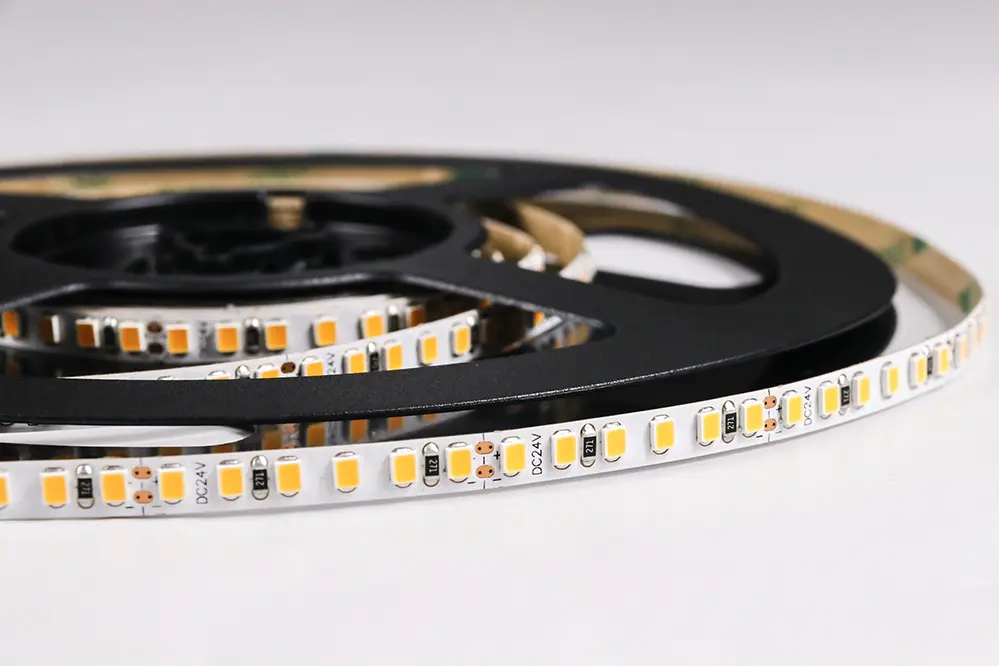
12V LED Strips: Check if your existing lighting system or controllers are compatible with 12V strips before making a decision.
24V LED Strips: Ensure that your power supply and controllers support 24V strips for seamless integration.
Cost Consideration:
12V LED Strips: Generally more affordable upfront, but the total cost may increase with additional power supplies and maintenance.
24V LED Strips: Higher initial investment, but cost-effective for larger projects due to fewer power supplies and maintenance requirements.
Consultation with Professionals:
If you are unsure about which voltage to choose, consider consulting with lighting professionals or suppliers for personalized recommendations based on your specific needs.
By carefully evaluating these factors and considering your project requirements, you can confidently choose between 12V and 24V LED strips to achieve the desired lighting effects and performance.
Installation Considerations
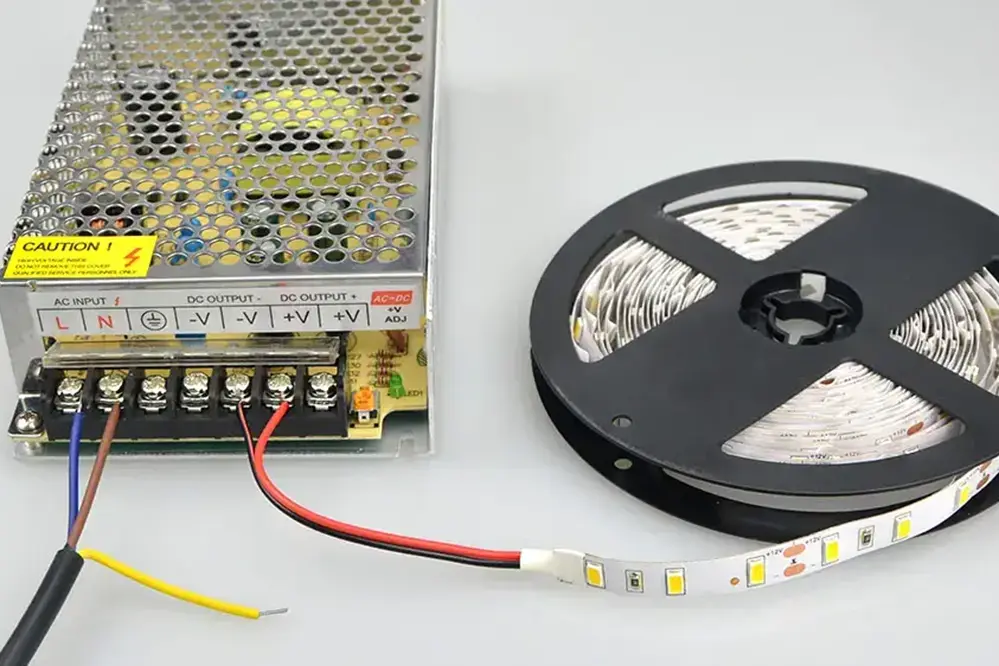
When planning the installation of LED strip lights, assess the surface where the lights will be mounted. Ensure it is clean, smooth, and dry to maximize adhesion. Additionally, consider the availability of power sources, using low-voltage, DC (direct current) adapters, to avoid potential safety hazards.
Evaluate the strip light’s IP rating to determine its suitability for wet or dusty environments, especially in bathrooms and outdoor settings. Properly secured connections are vital to prevent electrical shorts and ensure longevity.
Power Supply
When choosing LED strip lights, ensuring an appropriate power supply is paramount. Inconsistent or inadequate power can result in reduced performance or complete failure of the lighting system.
Power supplies must be matched to the specific voltage requirements of your LED strips.
Typically, LED strip lights come in 12V or 24V models, which necessitates a compatible power supply.
Overloading can compromise the system’s integrity, so calculate the total wattage needed.
To determine the correct power supply capacity, sum the wattage per meter of the strip and multiply it by the total length, then add a 20% buffer.
Lastly, remember to prioritize safety by selecting power supplies that meet UL (Underwriters Laboratories) standards. This ensures the power unit operates reliably within specified conditions.
Mounting Options
Selecting the right mounting options is essential to ensure the proper installation and functionality of LED strip lights.
- Adhesive Backing: Many LED strips come with a pre-applied adhesive for easy application to clean, smooth surfaces.
- Mounting Clips: For a more secure fit, utilizing mounting clips can provide extra stability, especially in areas prone to movement.
- Aluminum Channels: These channels not only help with mounting but also act as heat sinks to enhance the strip light’s longevity.
- Magnetic Mounts: Ideal for temporary installations or when you need flexibility, magnetic mounts allow for easy repositioning.
- Screw-in Brackets: For heavy-duty applications where maximum security is required, screw-in brackets are reliable.The choice of mounting method directly affects both the ease of installation and the longevity of the LED strip lights.
Always take into account the surface material and ambient conditions when selecting your mounting option for optimal performance.
Smart Control Features
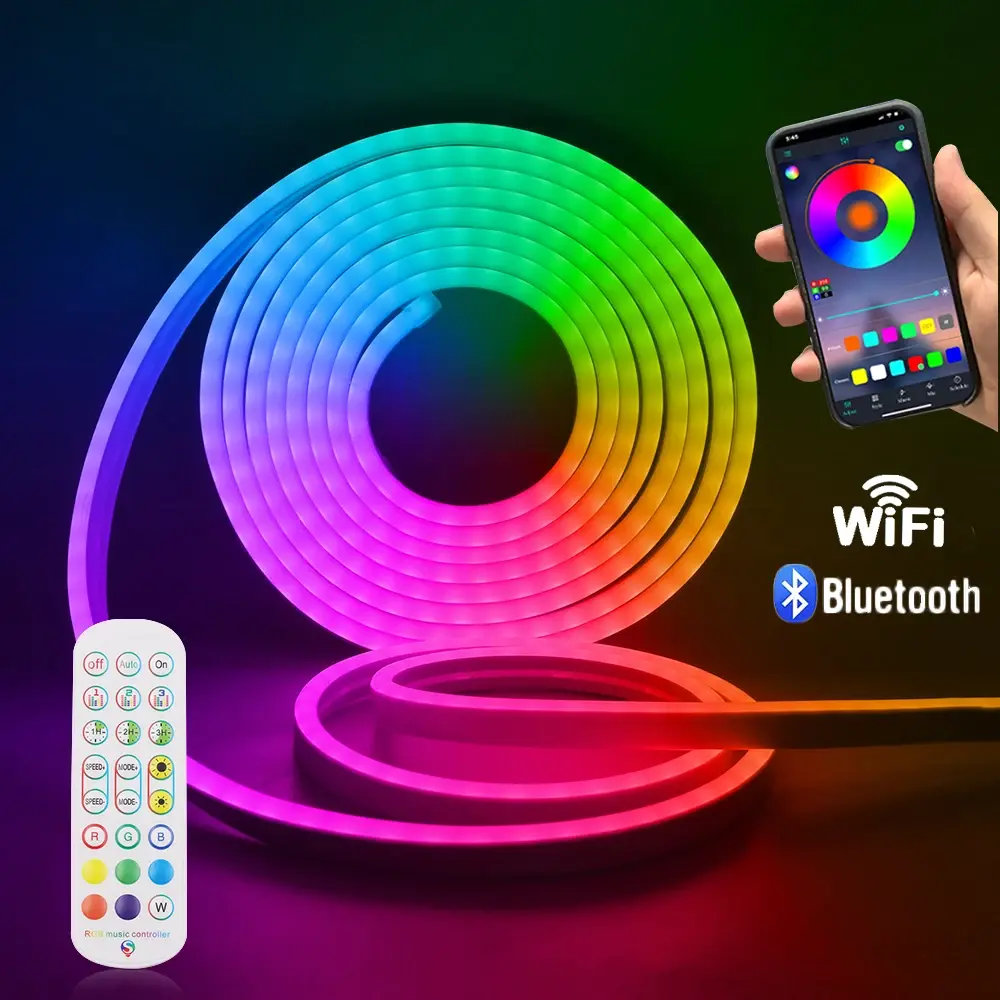
One of the key advancements in LED strip lighting is the integration of smart control features. These technologies enhance user experience by enabling remote control, voice commands, and pre-programmed scenes via applications on your smartphone.
Smart control capabilities allow for greater customization and convenience, making it easier to adjust the lighting to suit different moods and activities.
Remote and App Control
Modern LED strip lights often come with remote and app control, providing a higher level of convenience and functionality.
- Ease of Use: Control brightness(dimmable), color, and effects from your smartphone or a physical remote.
- Integration: Many apps offer compatibility with smart home systems like Google Home and Amazon Alexa.
- Customization: Create and save lighting scenes for different moods or activities.
- Scheduling: Automate lighting schedules to match your daily routine.
Consider whether you prefer a tactile remote or the versatility of a mobile app.
App-controlled systems often offer advanced features that aren’t available with simpler remote controls.
Compatibility with Smart Home Systems
Compatibility with smart home systems is a critical factor when choosing LED strip lights.
Ensure the lights you’re considering work seamlessly with platforms like Google Home, Amazon Alexa, or Apple HomeKit.
This compatibility empowers you to control your lighting setup using voice commands and integrates them into your existing smart home ecosystem effortlessly, enhancing the overall user experience.
When evaluating options, check if the manufacturer provides official support for the smart home system you use. If present, integration will be smoother and more reliable, significantly expanding the functional versatility of your LED strip lights.
FAQs
How to choose a good LED strip?
When evaluating LED strips, the first consideration is the lumen output. This measurement directly influences how bright your environment will be.
Check the CRI (Color Rendering Index). A higher CRI (above 80) ensures true-to-life color representation.
Inspect the watts per meter specification. This metric will indicate the efficiency and energy consumption of the LED strip, helping you assess its overall performance.
Furthermore, consider whether the strip is dimmable and compatible with your existing lighting system. This flexibility can add valuable functionalities such as ambient lighting or accentuating specific areas, making your installation highly versatile. Additionally, ensure the LED strips have the necessary certifications for safety and reliability, such as UL or CE marks, to guarantee longevity and compliance with international standards.
What are the best specs for LED strips?
When considering the best specifications for LED strips, one must pay attention to three key parameters: lumen output, color rendering index (CRI), and power consumption. These critical factors significantly influence the performance and application suitability of LED strips.
Lumen output, often measured in lumens per meter, indicates the light intensity. For task-oriented lighting, higher lumen values are preferable.
Color rendering index (CRI) is another vital aspect, with values above 90 being preferred for applications where accurate color representation is crucial, such as retail or photography studios.
Lastly, power consumption, typically indicated in watts per meter, determines energy efficiency. The balance between light output and power usage is essential to ensure both functional and cost-effective lighting solutions. Selecting LED strips with these optimal specifications guarantees both performance and efficiency.
What is better, 12V or 24V LED lights?
Voltage Differences in LED Lighting
When comparing 12V and 24V LED lights, it’s essential to consider the specific application and environment.
12V systems are typically used in automotive, marine, and low-voltage landscape lighting.
On the other hand, 24V systems are ideal for longer runs, minimizing voltage drop issues, and are commonly used in residential and commercial settings.
Therefore, the choice between 12V and 24V LED lights hinges on your project’s requirements, such as distance, power efficiency, ease of installation, and overall system design. With advancements in driver technology and dimming capabilities, both voltages can provide robust and efficient light output.
What’s the best LED strip length for a bedroom?
Selecting the optimal LED strip length for your bedroom involves both practical considerations and aesthetic choices. To determine the best fit, start by measuring the perimeter or the specific area where the strip will be installed. This ensures that you procure an adequate length without unnecessary excess.
Typically, a 16.4-foot (5-meter) LED strip is sufficient for most bedroom applications. This length is commonly available and versatile enough to cover the perimeter of a standard-sized bedroom or accentuate specific areas such as under beds or along shelves.
For larger bedrooms or more extensive lighting designs, consider multiple strips or longer rolls. Ensure each strip’s length complements the layout and avoids over-illumination or shadowy patches, which can disrupt the room’s ambiance.
It’s critically important to also contemplate the power supply requirements when planning the strip length. Longer strips will demand higher wattage, so verifying your power source’s capacity to support the full strip length is essential.
When integrating LED strips into your bedroom, pay attention to color temperature and brightness levels. Strips that come in adjustable settings offer better control over the ambiance, allowing for a tailored lighting experience that can shift from vibrant to calming.
In summary, the right LED strip length depends on your room’s dimensions and your lighting goals. Detailed measurement and careful planning ensure a seamless and visually pleasing integration.
How to ensure LED strip brightness is sufficient?
Ensuring that LED strip lighting achieves the desired brightness involves a comprehensive approach starting from the selection of appropriate products to the implementation of correct techniques.
A critical first step is to select the right LED strips with a high lumen output specification, which directly influences brightness.
Power supply requirements must be adequately matched to the LED strip’s demands to ensure maximum performance and brightness retention.
Additionally, it’s imperative to consider the environmental context, as factors such as the color of surrounding surfaces can affect perceived brightness.
To avoid dimming, ensure that all electrical connections are secure and free from any potential losses or resistance issues.
Employing dimmers that are compatible with the specific LED strips can provide flexibility in adjusting light levels to suit various needs.
Lastly, always verify the LED strip’s brightness in the target environment to ensure it meets the intended lighting goals. Proper planning and execution are essential for achieving satisfactory results.
Are waterproof LED strips necessary outdoors?
Utilizing waterproof LED strips for outdoor applications is crucial to ensure longevity and consistent performance. These strips are specifically designed to withstand various environmental conditions, including rain, snow, and humidity.
The Ingress Protection (IP) rating system classifies the degree of protection offered by these waterproof strips. An IP65-rated strip, for example, is protected against water jets from any direction.
Exposure to moisture and temperature fluctuations can significantly reduce the lifespan of non-waterproof LED strips. As a result, investing in waterproof versions is essential for robust and reliable outdoor lighting solutions.
Furthermore, waterproof LED strips often include UV-resistant coatings, which prevent damage from prolonged sun exposure. This added layer of protection ensures that outdoor lighting remains vibrant and efficient over time, making them indispensable for architectural, landscaping, and decorative outdoor projects.
What colors of LED strips are most popular?
The popularity of LED strip colors can vary significantly based on their application and the desired ambiance they create. Warm white strips are frequently chosen for residential settings due to their comforting and inviting hue, which mimics traditional incandescent lighting. This makes them ideal for living rooms, bedrooms, and dining areas where a cozy atmosphere is essential.
In contrast, cool white LEDs are a staple in commercial and industrial environments. Their crisp, bright light enhances visibility and reduces eye strain, making them perfect for offices, garages, and workspaces. These LEDs can also give a modern touch to kitchens and bathrooms.
RGB LED strips have surged in popularity due to their versatility and the ability to produce any color through red, green, and blue diodes. These are particularly sought after for decorative lighting, including gaming setups, home theaters, and festive decorations.
Additionally, addressable RGB strips allow for even more dynamic lighting effects, such as color chases and animated patterns, making them favorites for both entertainment spaces and professional displays.
Neutral white LEDs offer a balanced light that isn’t too warm or too cool, making them suitable for general-purpose lighting. They are often used in retail environments where accurate color representation is crucial.
Lastly, there is significant interest in specialty colors like blue and red LEDs for niche applications. Blue LEDs are common in aquariums and night environments, while red LEDs find use in photographic darkrooms and health-focused lighting.
In summary, the choice of LED strip color is influenced by the intended application, desired mood, and functional requirements, leading to varied preferences across different environments.
Conclusion
LED strip lights are versatile, offering flexibility and energy efficiency for various applications, from home décor to task lighting. To maximize their potential, consider compatibility, control options, and installation requirements carefully. Proper planning is crucial. Evaluate discussed aspects to ensure your chosen LED strip lights meet your needs, saving time and resources. Well-chosen LED strip lights can enhance any space’s ambiance and functionality. Understand and address critical factors to make an informed decision aligning with your preferences and requirements.
For top-quality LED strip lights and LED neon strips, consider reaching out to Unitop, a professional Chinese manufacturer based in China. With a reputation for excellence in the industry, Unitop offers a wide range of innovative and reliable lighting solutions to meet your specific needs. Contact Unitop today to explore their premium products and elevate your lighting projects to the next level.
